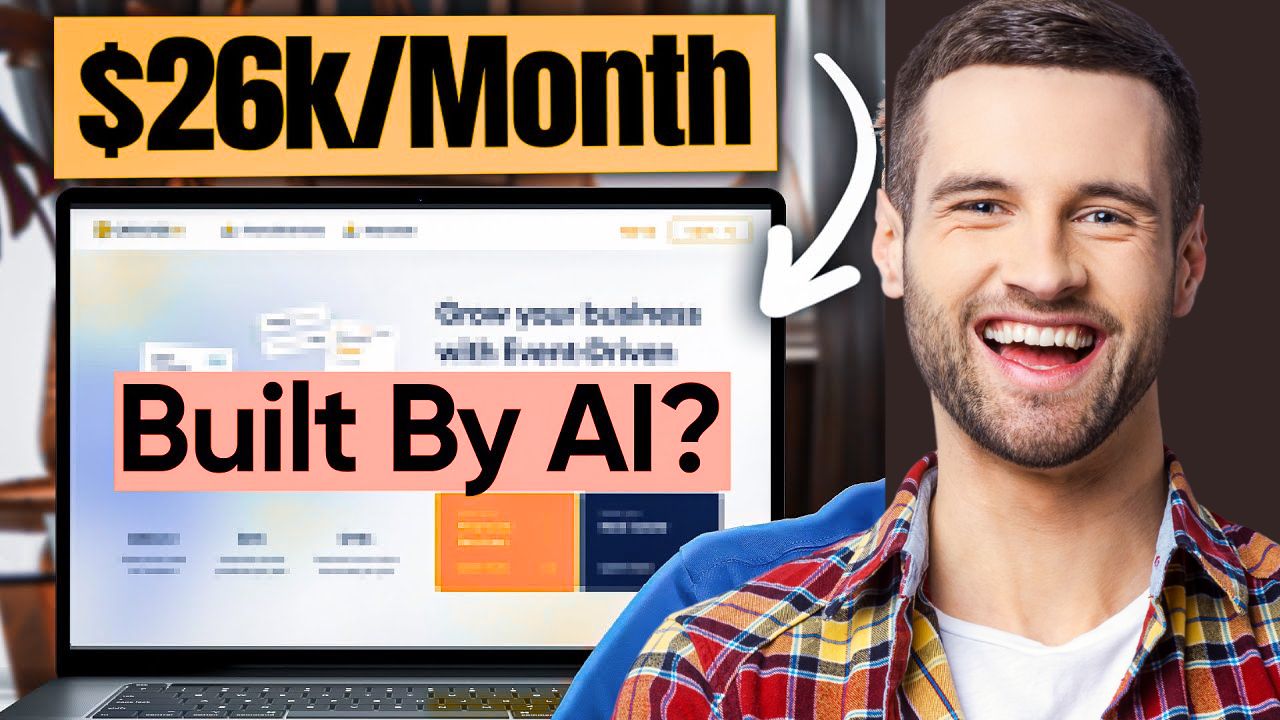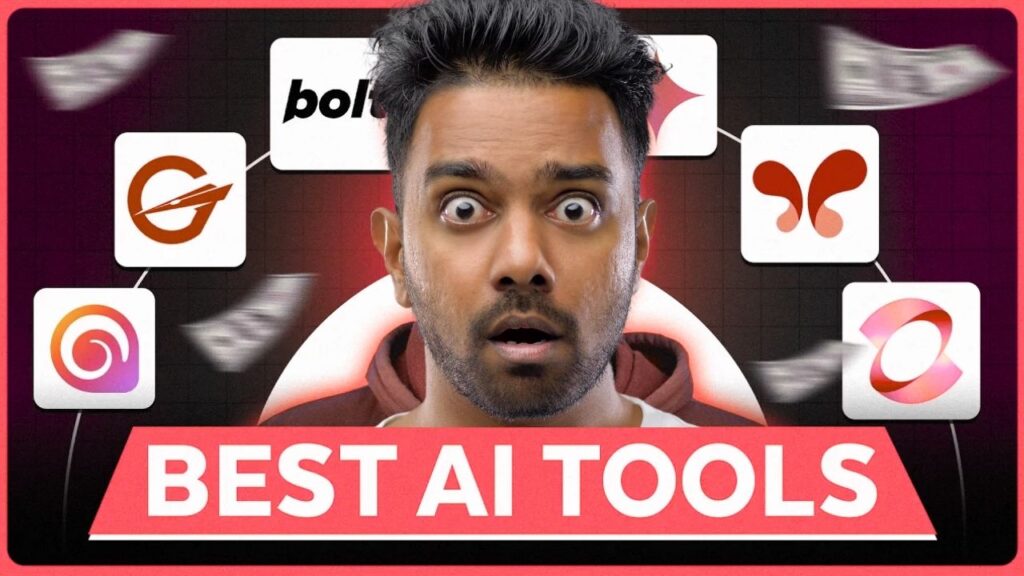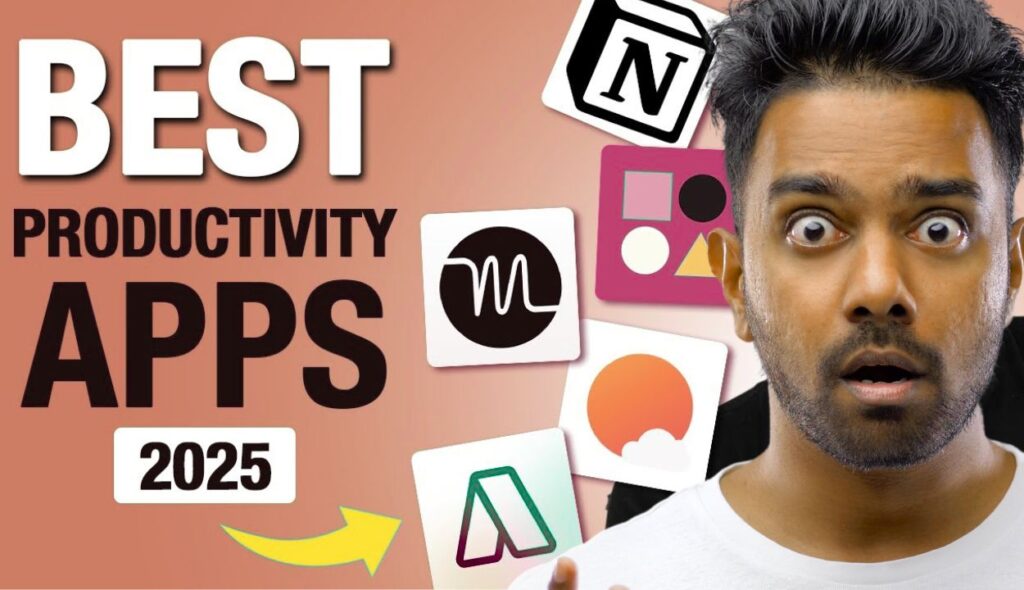Imagine building a web application that generates $26,000 per month without writing a single line of code. Sounds too good to be true? Not for David Breastler, the creator of Formula Bot. His story is a testament to the power of no-code AI tools, which are rapidly changing the landscape of web development in 2024. According to recent trends, AI-driven extensions are expected to re-energize growth in the add-in market, suggesting a steady expansion as AI increases demand for sophisticated plugins tailored to specific use cases.
This article dives deep into the Formula Bot success story, exploring how David, a non-programmer, leveraged AI to build a thriving business. We’ll also provide a step-by-step guide on how you can build your own AI web app using no-code tools, along with proven marketing strategies to ensure your creation reaches its full potential. If you’re an aspiring entrepreneur, a marketer looking to leverage AI, or simply curious about the possibilities of no-code development, this article is for you.
The Formula Bot Success Story
Formula Bot’s journey from concept to $26,000 per month is an inspiring example of what’s possible with the right idea and the right tools.
Origin Story
David Breastler wasn’t a programmer; he was an Excel expert. His background gave him a unique insight into a common problem: many of his coworkers constantly sought his help with Excel formulas. Recognizing this widespread need, David envisioned an AI-powered Excel assistant that could simplify complex tasks. This idea sparked the development of Formula Bot, an application designed to automate formula creation and data analysis for spreadsheets.
Building Formula Bot
Faced with the challenge of building an application without coding skills, David turned to Bubble.io, a no-code platform. Bubble allowed him to translate his vision into reality by explaining what he wanted the app to do, and the platform helped him turn those ideas into a functional product. The development process involved:
- Choosing Bubble.io: David selected Bubble.io for its AI-powered no-code capabilities.
- Rapid Prototyping: Bubble enabled quick iterations and flexible updates without traditional coding.
- Stripe Integration: He integrated Stripe for managing payments.
- AI Model Integration: The system leverages AI models (such as OpenAI’s GPT) trained on large datasets of spreadsheet formulas to interpret natural language inputs.
The result was a chatbot that lives directly in an Excel spreadsheet. Users could simply type a question, and Formula Bot would generate the necessary formula or perform data analysis. This innovative approach not only solved David’s immediate problem but also tapped into a broader market of Excel users seeking to streamline their workflow.
The No-Code AI App Building Landscape
The success of Formula Bot highlights the growing potential of no-code AI app development. Several platforms are now available, each with its strengths and weaknesses.
Popular Platforms Comparison
- Bubble.io: A full-stack web app builder with a drag-and-drop interface and a robust plugin market. BubbleAI can generate complete apps from prompts, making it versatile for complex, logic-heavy applications. Pricing starts at $29/month after a free plan.
- Hostinger Horizons: As demonstrated in the video, Hostinger Horizons allows users to build web apps by simply describing their vision. It’s particularly user-friendly and offers a free tier with limited chat messages.
- Glide: Excels in rapid prototyping and template-driven app creation. It’s very easy to start with and best suited for internal tools or simpler business applications. Pricing starts at $49/month after a free plan.
- BuildFire: A drag-and-drop mobile app builder with strong branding features, powered by BuildFire AI, which automates content and design. It’s ideal for SMBs needing mobile solutions quickly, but pricing requires a custom quote.
- AppSheet: A no-code platform on Google Cloud that allows creating web and mobile apps from spreadsheets or templates. It integrates natively with Google services and offers built-in machine learning features. Paid plans start at around $5/user/month.
Key Features to Look for in No-Code Platforms
When selecting a no-code platform for your AI web app, consider the following features:
- AI Integration Capabilities: The platform should easily integrate with AI models like OpenAI’s GPT.
- Ease of Use: A drag-and-drop interface and intuitive workflow are crucial for non-programmers.
- Scalability: Ensure the platform can handle increasing traffic and data as your app grows.
- Pricing Models: Understand the pricing structure and choose a plan that aligns with your budget and usage.
- Community Support: A strong community can provide valuable assistance and resources.
Step-by-Step Guide: Building Your Own AI Web App
Inspired by Formula Bot’s success? Here’s how you can build your own AI web app:
Planning Phase
- Identify Market Needs: Look for problems that can be solved with an AI-powered solution.
- Define Core Features: Determine the essential functionalities of your app.
- Select the Right Platform: Choose a no-code platform that aligns with your technical skills and project requirements.
- Set Development Timeline: Establish realistic milestones to keep your project on track.
Development Process
- Set Up Your Development Environment: Create an account on your chosen platform and familiarize yourself with its interface.
- Create the User Interface: Design the layout and user experience of your app.
- Implement AI Functionality: Integrate AI models to automate tasks and provide intelligent features.
- Testing and Iteration: Thoroughly test your app and make necessary adjustments based on user feedback.
- Launch Preparation: Prepare your app for launch by optimizing performance and ensuring a smooth user experience.
Marketing Strategies for AI Web Apps
Building a great app is only half the battle. Effective marketing is essential for reaching your target audience and generating revenue.
David’s Marketing Approach for Formula Bot
- Initial Launch to Coworkers: David started by sharing Formula Bot with his colleagues, who provided valuable feedback and became early adopters.
- Reddit Community Engagement: He actively participated in the Excel community on Reddit, sharing his app and engaging with users.
- Content Marketing: David created content showcasing the benefits of Formula Bot and providing helpful Excel tips.
- Paid Advertising: He used Google Ads to target users searching for Excel-related solutions.
Proven Marketing Channels
- Community Building: Engage with relevant online communities on platforms like Reddit, Facebook, and LinkedIn.
- Social Media Presence: Create a social media strategy to promote your app and engage with potential users.
- SEO Optimization: Optimize your website and app store listing to rank higher in search results.
- Paid Advertising Strategies: Use targeted advertising on platforms like Google Ads and social media to reach your ideal audience.
- Partnership Opportunities: Collaborate with complementary businesses to cross-promote your apps.
To effectively market your SaaS product on Reddit, consider the following strategies:
- Subreddit Targeting: Identify and join relevant subreddits that align with your SaaS product’s audience.
- Content Marketing Approaches: Create educational posts, case studies, and industry research summaries to provide tangible value.
- Engagement Techniques: Build credibility by regularly answering questions and participating in discussions.
- Leverage Targeted Reddit Ads sparingly: Create ads tailored specifically for each subreddit’s interests.
Monetization Strategies
Once you’ve built and marketed your AI web app, it’s time to monetize your efforts.
Pricing Models
- Free Tier Strategy: Offer a free version of your app with limited features to attract a wider audience.
- Premium Features: Charge for advanced features and functionality.
- Enterprise Solutions: Offer customized solutions for larger organizations.
- Subscription vs. One-Time Payment: Choose a pricing model that aligns with your business goals and customer preferences.
Revenue Optimization
- User Feedback Implementation: Continuously improve your app based on user feedback.
- Feature Prioritization: Focus on developing features that provide the most value to your users.
- Pricing Optimization: Experiment with different pricing strategies to maximize revenue.
- Customer Retention Strategies: Implement strategies to keep your customers engaged and subscribed.
Future Trends and Opportunities
The market for AI tools and software is rapidly evolving, presenting numerous opportunities for innovation.
Market Evolution
- Growing Demand for AI Tools: As AI becomes more integrated into everyday life, demand for AI-powered solutions will continue to grow.
- Emerging Niches: New niches and use cases for AI are constantly emerging.
- Technology Advancement: AI technology is rapidly advancing, opening up new possibilities for app development.
- Competition Analysis: Stay informed about your competitors and differentiate your app with unique features and functionality.
Success Factors
- Innovation Importance: Continuously innovate and improve your app to stay ahead of the competition.
- User Experience Focus: Prioritize user experience to ensure your app is easy to use and engaging.
- Continuous Improvement: Regularly update your app with new features and bug fixes.
- Community Engagement: Foster a strong community around your app to build loyalty and gather feedback.
To effectively promote AI tools and software in 2024, consider the following strategies:
- Targeting: Utilize AI to segment audiences based on predicted behaviors.
- Positioning: Employ AI-based tools for rapid competitor analysis and real-time market monitoring.
- Content Marketing: Leverage generative AI platforms for scalable creation of SEO-optimized content.
- Customer Acquisition Techniques: Implement data-driven lead scoring and automated customer journey mapping.
Conclusion
David Breastler’s Formula Bot success story is a powerful reminder that anyone, regardless of their coding experience, can build a successful AI web app with the right tools and strategies. By leveraging no-code platforms, focusing on user needs, and implementing effective marketing strategies, you can turn your innovative ideas into reality.
Ready to get started? Explore the resources mentioned in this article, experiment with different no-code platforms, and don’t be afraid to iterate and improve as you go. The future of web development is here, and it’s more accessible than ever.



